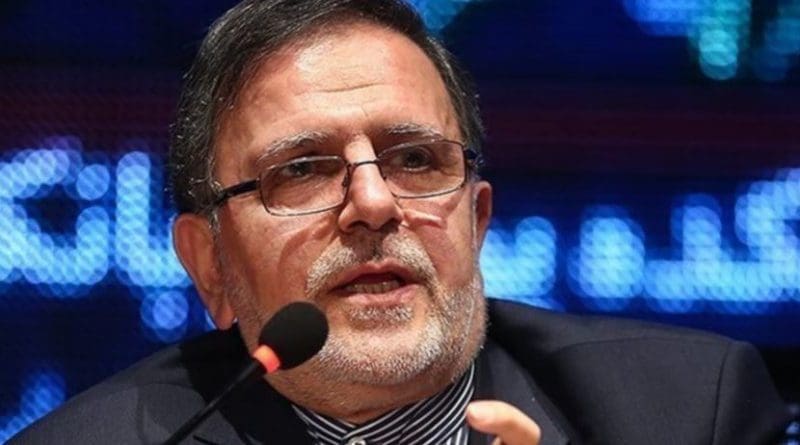Iran Takes Measures To Combat Rial’s Fall To Record Lows
By RFE RL
(RFE/RL) — Iran’s central bank announced measures to combat the rial’s fall to record lows one day after police cracked down on foreign exchange dealers on the streets of Tehran.
The central bank’s announcement on February 15 that it will allow an increase in the interest rates paid on bank deposits came after the Iranian currency plummeted to a record low of 48,400 to the dollar earlier in the week.
“We will use all means at our disposal to get out of this situation and restore calm to the market,” central bank chief Valiollah Seif was quoted by Iranian media as saying on February 15.
The rial has lost one-quarter of its value against the U.S. currency since the central bank said in September that it would limit the rates that banks can offer. The currency also has been depressed by worries that the United States may pull of out Iran’s 2015 nuclear deal with world powers and other factors.
The central bank’s latest move amounted to a reversal of its September policy of imposing a cap on bank deposit rates. It said it now wants to encourage savers and investors to keep their money in Iranian rials rather than flee to foreign investments.
Banks will for the next two weeks be authorized to offer interest rates of up to 20 percent on fixed one-year deposits, up from 15 percent previously, the central bank said.
In another measure to discourage investors from leaving Iran and diverting money into the U.S. dollar, the central bank offered the sale of gold coins at what it said were attractive prices.
The government daily Iran reported on February 15 that authorities also have closed the bank accounts of 775 people suspected of distorting the foreign exchange market with capital movements totalling 200 trillion rials (over $4 billion).
The moves came after police closed 10 foreign exchanges offices on February 14 and arrested 90 money changers on the streets of Tehran in a sting operation broadcast on Iranian state television.
“The foreign exchange speculators have been identified,” Iranian media quoted Seif as saying.
The combination of measures appeared to have some success at bolstering the value of the rial. It was changing hands at 47,200 to the dollar by late on February 15.
But it was still far below the 10,000 level that prevailed before international economic sanctions were imposed on Iran in 2012 in a U.S.-orchestrated effort to discourage Iran from developing nuclear weapons.
The rial had been expected to strengthen after those sanctions were lifted in 2016 as part of the nuclear deal in exchange for Iran curbing its nuclear activities. Iran has denied it ever intended to develop nuclear weapons.
Analysts say the steep decline in Iran’s currency in recent months has contributed to public discontent over the economy, as it stokes inflation in the price of imported goods and necessities. Inflation in Iran is running close to 10 percent a year.
Anger at rising prices helped to stoke a wave of public protests that were put down by authorities last month.
The currency’s decline also reflects the increasingly aggressive stance against Iran taken by U.S. President Donald Trump since he took office last year.
Trump has threatened to pull the United States out of the nuclear deal and he has tightened sanctions against Iran targeting its ballistic missile development and intervention in regional conflicts.
The nuclear deal was expected to bolster Iran’s economy in part by spurring a wave of foreign investment in the country.
But a U.S. ban on Iran using the U.S. dollar or U.S. financial institutions to conduct business has remained in effect and continues to pose a major obstacle for European and Asian banks, which fear being penalized by the United States if they invest in Iran, officials and analysts have said.
Iranian Vice President Mohammad Bagher Nobakht told AFP in an interview on February 15 that worries among foreign banks about violating the U.S. sanctions is now the top obstacle for Iran’s economy and currency.
“Our main problem is the very heavy climate created by the United States for European banks, which don’t dare work with us,” he said.
The ban on using the U.S. dollar has also posed major difficulties for Iran as it seeks to sell its biggest export — oil — around the world. Global oil sales normally are conducted in U.S. dollars on international commodity exchanges.
Nobakht, who is in charge of state planning and the budget, told AFP that Iran has been able to get around the U.S. dollar restrictions to some extent by trading oil under barter arrangements with major buyers like China and India.
“Some countries, like India and China, have set conditions under which we receive part of our oil revenues in the form of products from those countries,” he said.

